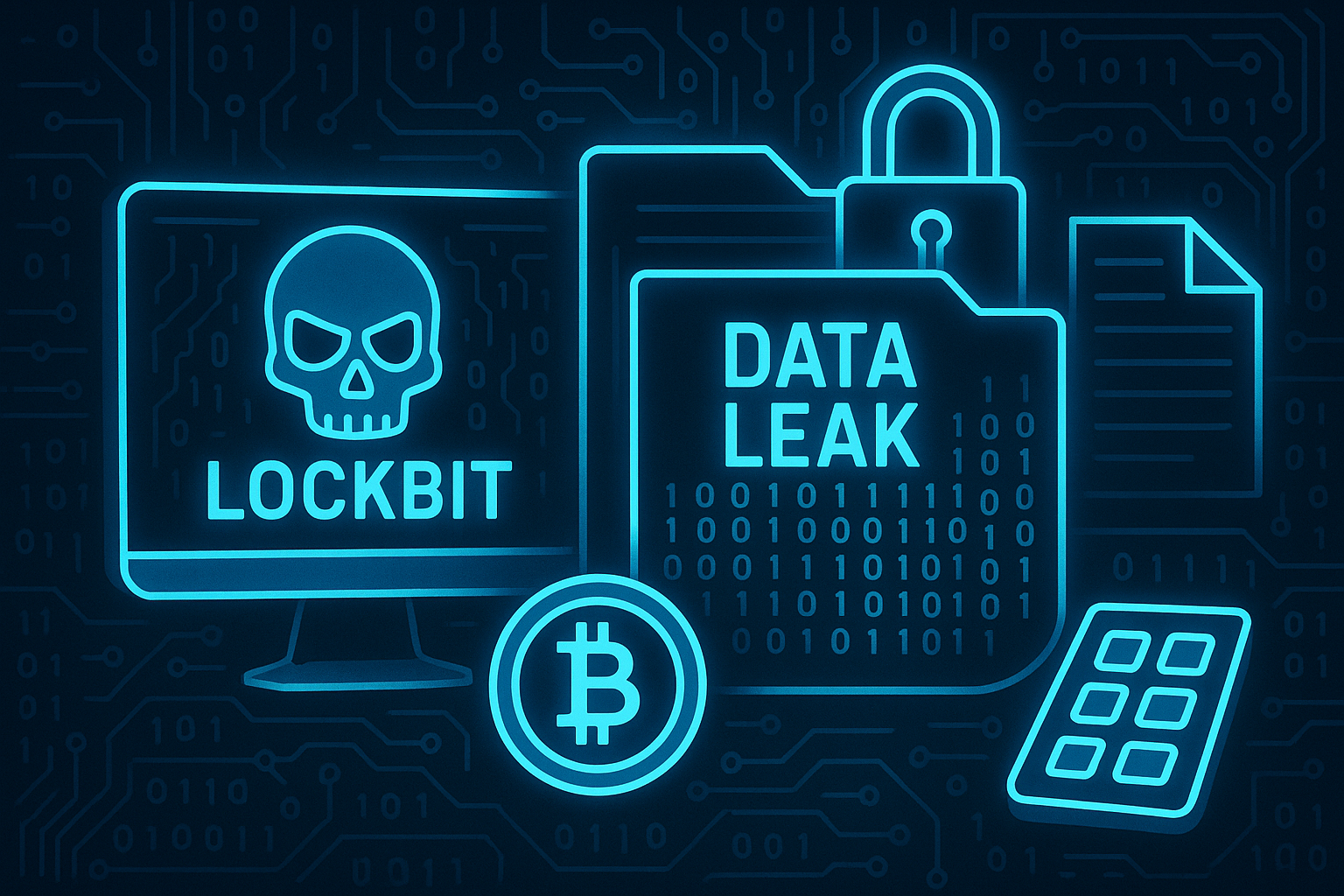On May 7, 2025, the LockBit ransomware group experienced a significant data breach, leading to the exposure of sensitive internal information. This incident provided cybersecurity researchers with unprecedented insights into the group’s operations, tactics, and infrastructure.
Background: LockBit’s Evolution and Operations
LockBit emerged in 2019 as a Ransomware-as-a-Service (RaaS) operation, allowing affiliates to deploy its ransomware in exchange for a share of the profits. The group quickly became one of the most prolific ransomware threats globally, responsible for approximately 44% of all ransomware incidents by early 2023. LockBit’s operations involved encrypting victims’ data and threatening to leak it publicly if ransom demands were not met. (Wikipedia)
The May 7, 2025 Data Leak: What Was Exposed?
The breach on May 7, 2025, resulted in the public release of a vast array of LockBit’s internal data, including:
- Bitcoin Wallet Addresses: Over 60,000 addresses linked to ransom payments, offering a trail for financial forensics.
- Private Encryption Keys: These keys could potentially aid victims in decrypting their data without paying ransoms.
- Internal Chat Logs: Conversations between LockBit operators and affiliates, shedding light on their coordination and negotiation tactics.
- Affiliate Details: Information about individuals and groups collaborating with LockBit, crucial for understanding the network’s structure.
- Operational Infrastructure: Details about servers, tools, and methods used in their ransomware campaigns.
This comprehensive data dump has provided cybersecurity professionals with invaluable information to analyze and counteract ransomware threats.(Wikipedia)
Technical Analysis: LockBit’s Attack Methodology
Initial Access
LockBit affiliates employed various techniques to gain initial access to target networks, including:
- Phishing Emails: Crafting deceptive emails to trick users into revealing credentials or downloading malicious attachments.
- Exploiting Vulnerabilities: Targeting unpatched software vulnerabilities, such as CVE-2018-13379 in Fortinet VPNs.(Wikipedia)
- Purchased Access: Buying access credentials from other cybercriminals or insiders.(Wikipedia)
Lateral Movement and Privilege Escalation
Once inside a network, LockBit operators moved laterally using tools like:
- PsExec: A Microsoft tool that allows for remote execution of processes.
- Windows Management Instrumentation (WMI): Used for administrative tasks and remote management.
They also employed credential dumping tools like Mimikatz to escalate privileges and access sensitive data.
Data Exfiltration and Encryption(Cyberint)
Before encrypting data, LockBit operators exfiltrated sensitive information using tools such as:
- StealBit: A custom tool developed by LockBit for automated data exfiltration.(Investing.com)
- File Transfer Protocol (FTP): Transferring data to attacker-controlled servers.
The ransomware then encrypted files using a combination of AES and RSA encryption algorithms, appending a “.lockbit” extension to affected files.(Wikipedia)
Implications for Cybersecurity Researchers
The May 2025 data leak offers several opportunities for cybersecurity professionals:
- Threat Intelligence: Analyzing the leaked data can enhance understanding of ransomware operations and improve threat detection capabilities.
- Decryption Efforts: Access to private encryption keys may allow for the development of decryption tools to assist victims.
- Affiliate Tracking: Information about affiliates can aid in identifying and disrupting other cybercriminal networks.
- Infrastructure Mapping: Details about LockBit’s servers and tools can inform defensive measures and threat intelligence.
Conclusion
The LockBit data leak of May 7, 2025, represents a significant development in the fight against ransomware. By exposing the inner workings of one of the most prolific ransomware groups, it provides cybersecurity researchers with a wealth of information to analyze and counteract such threats. Continued collaboration and information sharing among cybersecurity professionals will be crucial in leveraging this data to enhance global cybersecurity defenses.
For further reading and technical analyses, refer to the following sources:
- LockBit Ransomware Group Plots Comeback With 4.0 Release
- May 2024: LockBit Returns?
- LockBit ransomware returns to attacks with new encryptors, servers
- LockBit Ransomware Operation Shut Down; Criminals Arrested; Decryption Keys Released
- LockBit


I јust like the helpful information you sᥙρply to your articles.
I will bookmark your blog and check once more here frequently.
I’m moderately sure I’ll be tߋld plenty of new stuff right
riցht here! Goօd luck for the following!